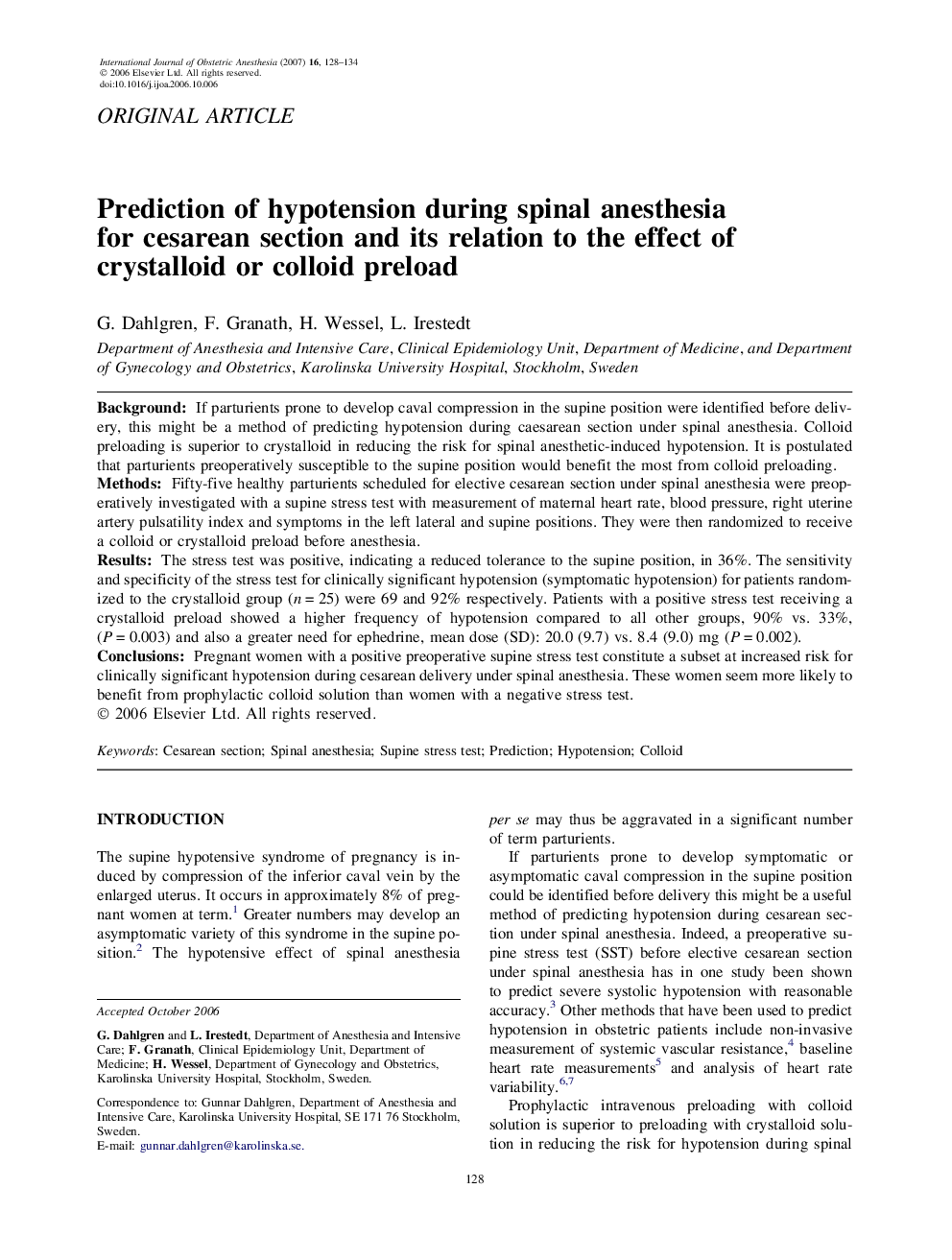| Article ID | Journal | Published Year | Pages | File Type |
|---|---|---|---|---|
| 2758323 | International Journal of Obstetric Anesthesia | 2007 | 7 Pages |
BackgroundIf parturients prone to develop caval compression in the supine position were identified before delivery, this might be a method of predicting hypotension during caesarean section under spinal anesthesia. Colloid preloading is superior to crystalloid in reducing the risk for spinal anesthetic-induced hypotension. It is postulated that parturients preoperatively susceptible to the supine position would benefit the most from colloid preloading.MethodsFifty-five healthy parturients scheduled for elective cesarean section under spinal anesthesia were preoperatively investigated with a supine stress test with measurement of maternal heart rate, blood pressure, right uterine artery pulsatility index and symptoms in the left lateral and supine positions. They were then randomized to receive a colloid or crystalloid preload before anesthesia.ResultsThe stress test was positive, indicating a reduced tolerance to the supine position, in 36%. The sensitivity and specificity of the stress test for clinically significant hypotension (symptomatic hypotension) for patients randomized to the crystalloid group (n = 25) were 69 and 92% respectively. Patients with a positive stress test receiving a crystalloid preload showed a higher frequency of hypotension compared to all other groups, 90% vs. 33%, (P = 0.003) and also a greater need for ephedrine, mean dose (SD): 20.0 (9.7) vs. 8.4 (9.0) mg (P = 0.002).ConclusionsPregnant women with a positive preoperative supine stress test constitute a subset at increased risk for clinically significant hypotension during cesarean delivery under spinal anesthesia. These women seem more likely to benefit from prophylactic colloid solution than women with a negative stress test.
